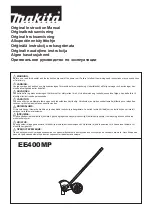
4
Back View
2. SAFETY
Be sure to comply with the safety instructions and warnings provided in this section.
Be sure to read these instructions, even if you are already familiar with the operation and use
of other similar products.
Note: The safety devices installed in this instrument by the manufacturer only constitute the basis
for accident prevention. Accident-free operation is, above all, the primary responsibility of the
owner of the instrument and the designated personnel who operates, services, or cleans the
instrument.
To ensure trouble-free operation of the instrument, make sure to comply with the following instructions
and warnings.
Warnings
– Transport and installation
•
Once removed from the crate, the instrument may only be transported in an upright position.
•
Never lift the instrument by the handwheels or the cassette clamp. Always remove the section waste
tray before transporting the instrument.
•
Connect the instrument to a grounded power socket only using one of the power cables provided
(GB9706.1 Standard).
•
Do not interfere with the grounding function by using an extension cord without a ground wire.
•
Do not operate in rooms with explosion hazard.
•
Exposure to extreme temperature changes between storage and installation locations and high air
humidity may cause condensation inside the instrument. If this is the case, wait at least 2 hours before
switching on the instrument. Failure to comply with this may cause damage to the instrument.
•
The protective devices on both instrument and accessories must neither be removed nor modified.
The trough for lifting the
instrument
Power switch





































